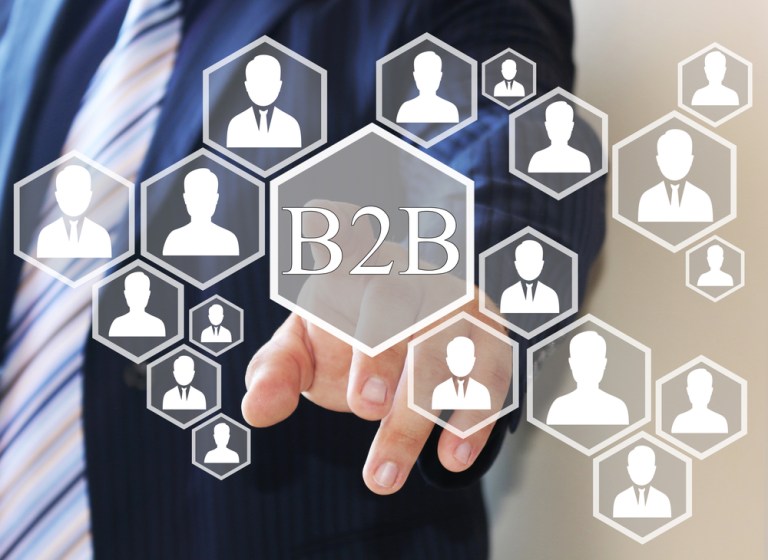How Data Is Changing The B2B Trading Game

One of the biggest challenges — and biggest opportunities — for B2B FinTech solutions today is integration. It’s one thing to support B2B eCommerce processes for buyers and suppliers using digital, automated solutions; it’s a whole other ball game to enable data from those processes to automatically land into existing accounting and ERP systems.
It’s the type of challenge that led B2B eCommerce platform Handshake to land in the Intuit QuickBooks App Store earlier this month. According to Handshake Founder and CEO Glen Coates, QuickBooks is so popular for U.S.-based SMEs that it was a logical move for the company. But, as Coates told PYMNTS, enabling that type of data communication and movement between a B2B eCommerce platform and an accounting system is about helping suppliers, manufacturers and distributors readjust their tactics and step into the modern world of B2B commerce.
Evolution In B2B eCommerce
The first step in an evolving B2B sales process is ditching manual processes, Coates explained. Sales representatives for distributors of candy and soda, for instance, will walk into a convenience store and go up and down the aisles with a pen and paper to write down a customer’s order. That order form will then go back to the distributor in a similarly manual way — often with sales representatives taking a picture of that piece of paper with the order information on their phones and emailing it back to the distributor.
It’s either that, Coates said, or calling the distributor so the sales rep can read back, line by line, what the customer’s order is.
New tools enable suppliers and distributors to access a better way, the Handshake executive said. “The placement of the order goes from being a pen-and-paper, manual process to being something closer to what consumers expect from shopping online today,” Coates noted.
Mobile tools mean sales representatives can record orders on the spot and that information can be automatically sent back to the distributor so they can begin the fulfillment process. It’s a significant step forward in the B2B eCommerce space and enables sales representatives and back-office workers to focus on more strategic initiatives. But it’s only the beginning in how automation can transform B2B trade.
Evolution In Data Management
There are ways that this kind of automation technology can improve the B2B eCommerce experience further, Coates explained. For instance, the financial transaction of the deal can be accelerated.
While many transactions don’t involve billing at the time an order is placed, there are portions of the market where this does happen. Or a sales representative may be on-location with a customer to take a new order but want to inquire about an existing outstanding invoice. None of this is possible if data from an order and from accounts receivable aren’t intertwined.
“The sales rep might go in for a visit, and there may be an outstanding balance for the previous invoice they want to collect on,” Coates said. “The most important thing for the sales rep or the customer to have is an accurate picture of the actual amount that’s owed.”
Considering the popularity of customer-specific pricing in B2B commerce, understanding exactly what a customer owes while a sales rep is on the spot of a sale can be impossible without up-to-date data available remotely.
“There’s no way [a sales rep] can put together an accurate invoice and charge a credit card, because how do they really know what they’re charging?” Coates noted, adding that this scenario demands control of data on pricing and ordering history and an accurate update on invoice status — all available from a mobile device. He added that it’s a situation that requires the ability for an accounting system of a distributor or wholesaler to link into the sales platform so a sales representative can access that information.
Evolution In Payments
Handshake’s presence in QuickBooks is a big step towards many of these advancements for suppliers and their sales representatives to automate processes and gain on-demand access to accurate data. But the connection between B2B sales and accounting information can go further, Coates said, especially when it comes to the payment.
According to Coates, Handshake is hearing from its seller clients that they’re interested in integrating electronic payments support, a way for these companies to gain a whole new source of data.
“It’s not only getting the account status information and pricing information from QuickBooks into these more mobile and customer-facing apps but also integrating payments providers so the manufacturer or distributor can offer that option to customers,” he noted, “and potentially take a load off an accounts receivable person at the manufacturer, having to chase down those payments before people can start ordering again.”
It keeps the business moving, keeps the cash flowing and supports the demand for on-site sales reps to access up-to-date data from their mobile devices. It’s all about helping professionals free up time to focus on more important tasks, Coates said, and data aggregation and automation are critical.
“Think about the back office, keying in orders into their back-end system, when they could be doing something better like talking to customers,” he noted. “Anything else that’s not such mindless data entry work in a connected, integrated world — that part of the job can go away, and they can focus on doing things that are a better use of their time and better for their business.”